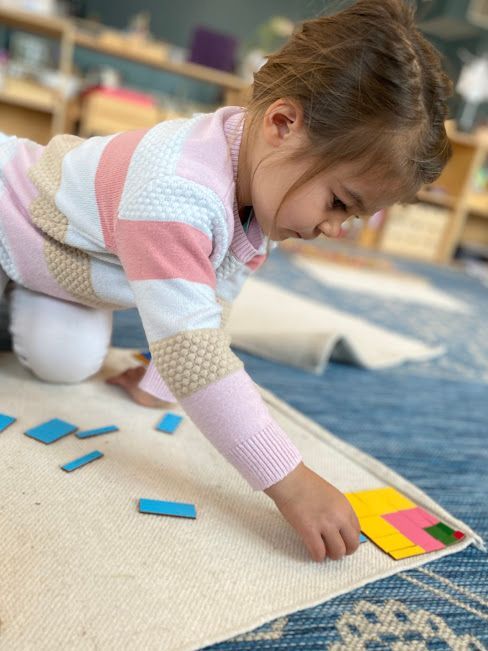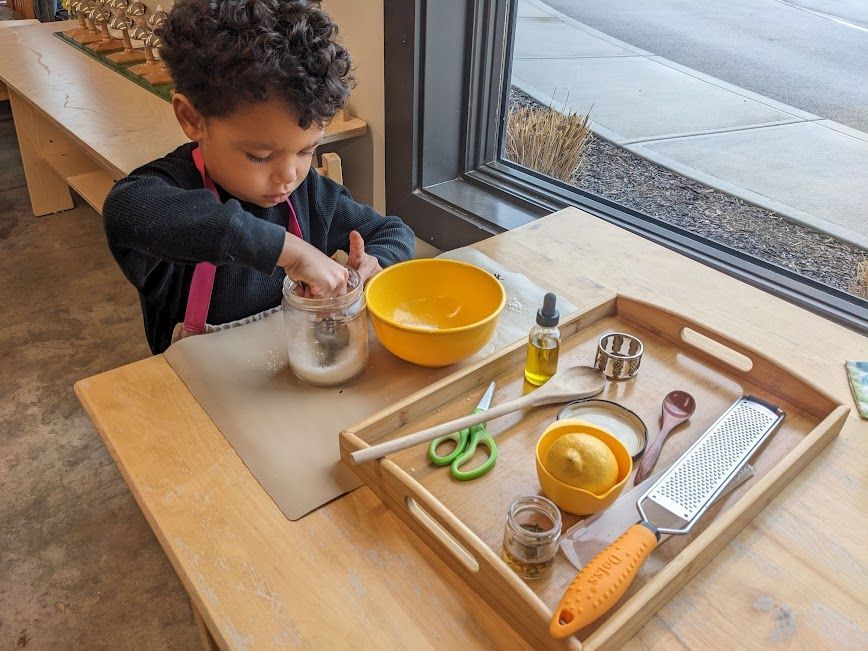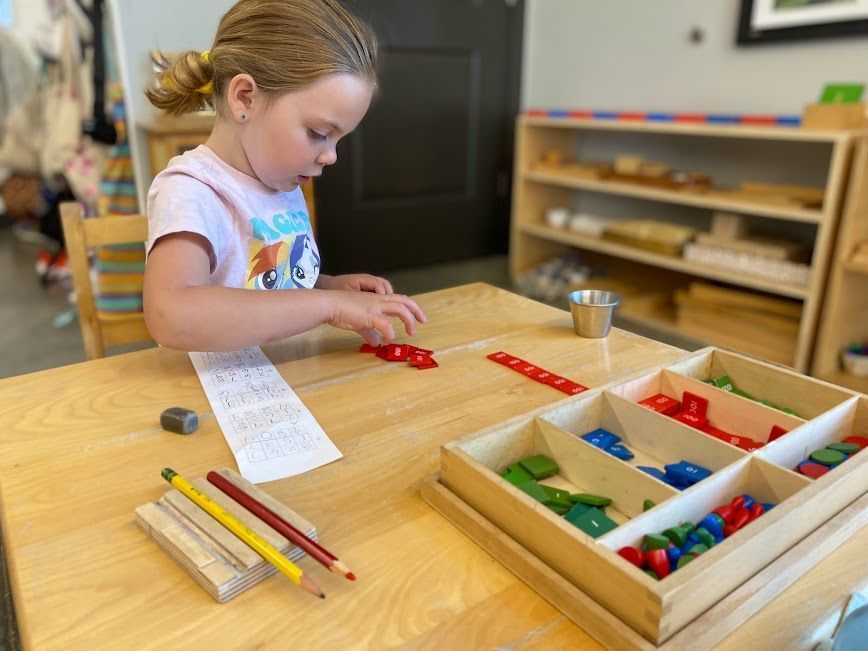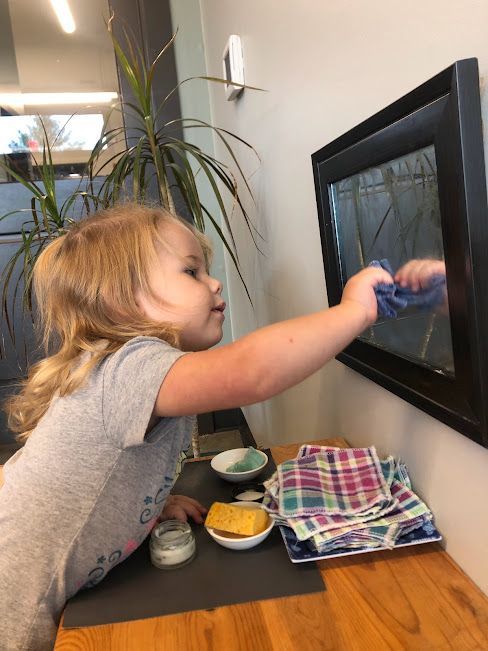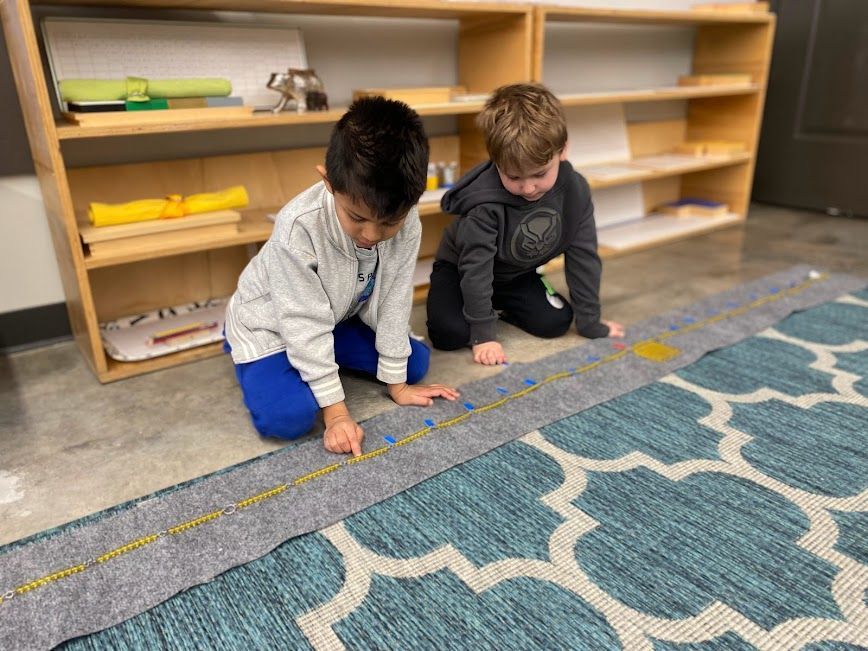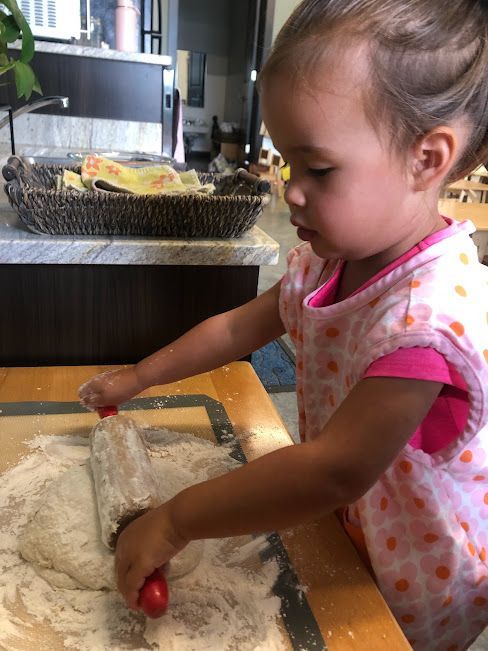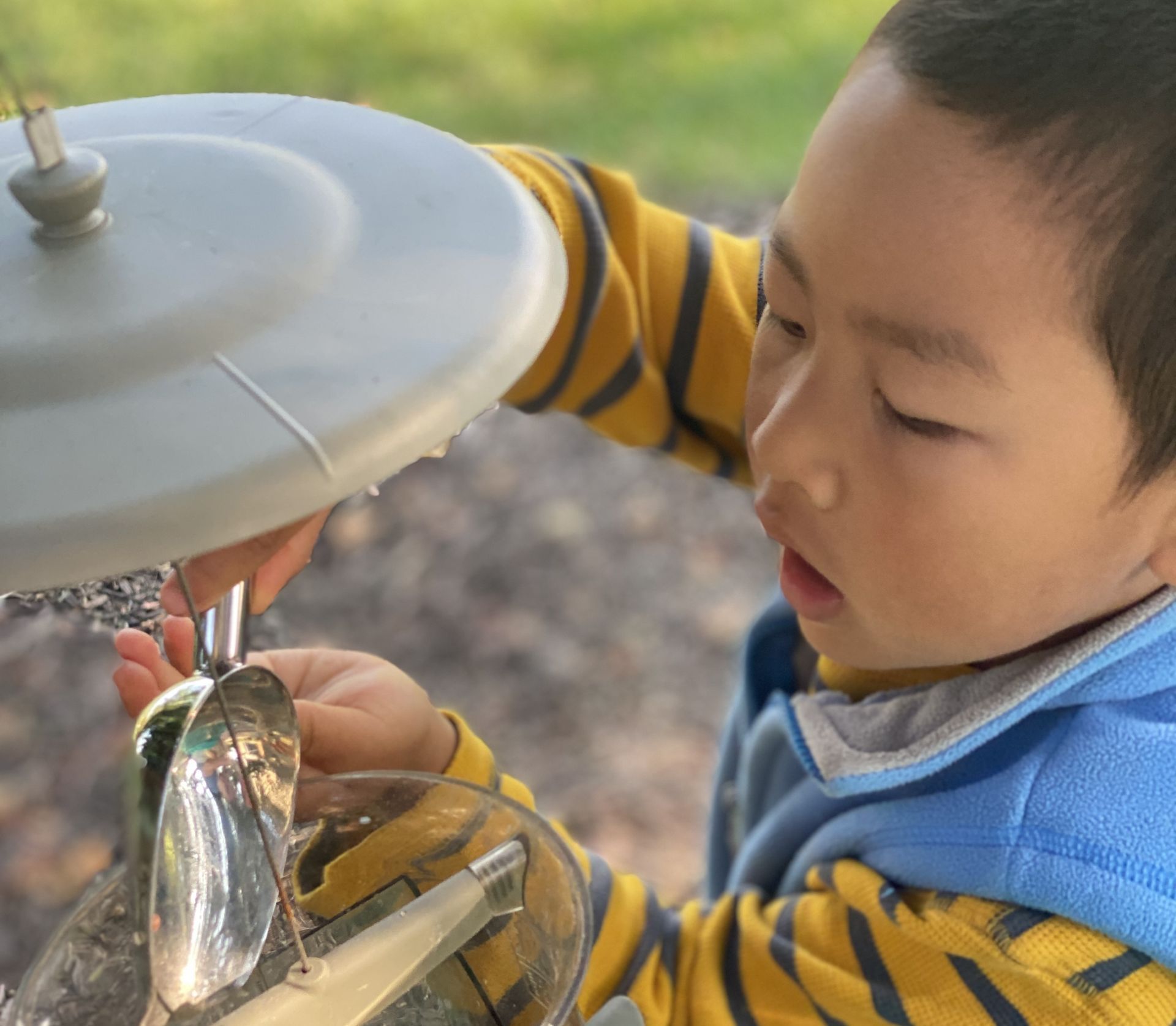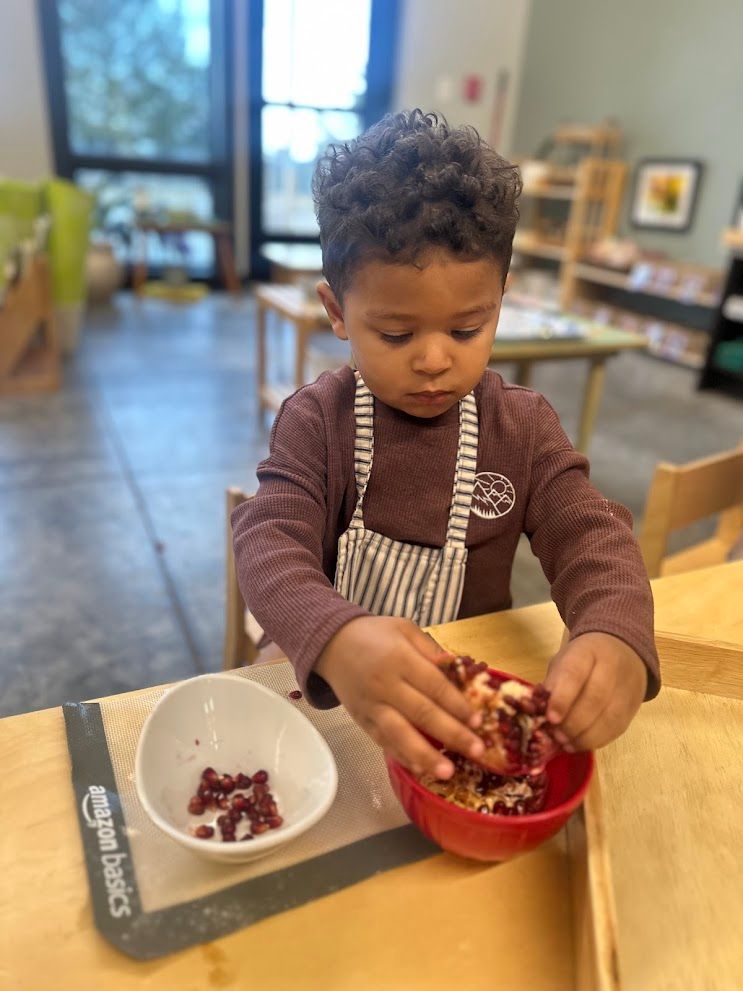"The child who concentrates is immensely happy. "
DR. MARIA MONTESSORI
It is somewhat of a myth that young children cannot concentrate. The youngest child does have the ability to concentrate and can do so for long periods of time. The ability to concentrate should be developed and practiced much like many other attributes.
We observe deep concentration in our classrooms on a daily basis. It's not surprising to us to see several children engaged for well over an hour with the same activity. We are better able to support the development of concentration in our classroom environments because of the following:
Engaging
Young children are routinely engaged, with a purpose, in order to complete a task. They love what they do! Our materials are engaging and purposely designed to entice the child towards them. They find joy in their work and therefore, the thought of continuing to work for a longer period of time is not a hindrance to them. For example, the children love baking real bread, building arch ways that stand alone and creating their own stories.
Purposeful
Our materials are purposeful and thought out. Every item on the shelf was placed in its particular space for a particular reason. This allows the child to find purpose and meaning in her work and actions, knowing she is not working to just "be busy". For example, children find purpose in filling bird feeders, arranging flowers for the table or preparing snacks for the classroom community. They feel the need to contribute and find purpose in these works.
Multiple Steps
As the child moves through the materials in the classroom, the materials become progressively more complex. The increase of sequenced steps allows the child to further develop his concentration skills. The youngest child, at age 3, might be working with Hand Washing which has a few familiar steps: retrieving water, lathering hands, rinsing the soap off and drying. At age 5, the child might be Baking Blueberry Scones which is inherently more involved. This requires the child to be able to master the multiple steps involved with this material.
Defined End
Our classroom community functions with the idea that materials are returned for the next person to use as the last step in the completion of the work. This means the child knows exactly when he has completed the use of the material. Many materials are not open-ended. This means the child works through them until completion. There's no putting the material away as they can see it's not completed. This aids the child in the development of concentration in that they have an internal drive to see the work through to the end. The rules are the same for everyone and the child quickly understands the work must be completed to move on to another material in the classroom. For example, if a child is scrubbing a table, she must wipe off the bubbles, dry the table, empty the used water and put all items neatly back on the tray for the next child to use before the work is complete.
If you want to aid your child in developing his/her concentration at home, take a few moments to look at the home environment and implement these elements into your child's activities. You will be surprised at your child's capabilities!

